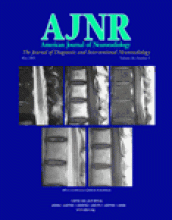Abstract
BACKGROUND AND PURPOSE: Diffuse axonal injury (DAI) is a common type of primary neuronal injury in patients with severe traumatic brain injury (TBI), and is frequently accompanied by tissue tear hemorrhage. T2‐weighted gradient-recalled echo (GRE) sequences are more sensitive than T2-weighted spin-echo images for detection of hemorrhage. The purpose of this study is to compare turbo Proton Echo Planar Spectroscopic Imaging (t-PEPSI), an extremely fast sequence, with GRE sequence in the detection of DAI.
METHODS: Twenty-one patients (mean age 26.8 years) with severe TBI occurred at least 3 months earlier, underwent a brain MR Imaging study on a 1.5-T scanner. A qualitative evaluation of the t-PEPSI sequences was performed by identifying the optimal echo time and in-plane resolution. The number and size of DAI lesions, as well as the signal intensity contrast ratio (SI CR), were computed for each set of GRE and t-PEPSI images, and divided according to their anatomic location as lobar and/or deep brain.
RESULTS: There was no significant difference between GRE and t-PEPSI sequences in the detection of the total number of DAI lesions (291 vs. 230, respectively). GRE sequence delineated a higher number of DAI in the temporal lobe compared to the t-PEPSI sequence (74 vs. 37, P < .004), while no differences were found for the other regions. The SI CR was significantly lower with the t-PEPSI than the GRE sequence (P < .00001).
CONCLUSION: Owing to its very short scan time and high sensitivity to the hemorrhage foci, the t-PEPSI sequence may be used as an alternative to the GRE to assess brain DAI in severe TBI patients, especially if uncooperative and medically unstable.
- Copyright © American Society of Neuroradiology












